
Pablo Picasso Giclée Fine Art Prints 1 of 3
1881-1973
Spanish Painter
Pablo Picasso emerged from Málaga in 1881 into a world that would witness his radical transformation of visual language. The sheer volume of his output - exceeding 20,000 works across multiple media - speaks less to mere productivity than to an unrelenting interrogation of form itself. His trajectory through the early twentieth century traces not simply personal evolution but the very contours of modernism's emergence.
The formative Barcelona years, beginning in 1899, positioned the young artist within the ferment of Els Quatre Gats, where modernist poets and writers congregated. This crucible of intellectual exchange would prove formative, yet it was the suicide of Carlos Casagemas in 1901 that precipitated what we now recognize as the Blue Period. Between late 1901 and mid-1904, Picasso's palette contracted into a monochromatic meditation on desolation. The Blind Man's Meal of 1903 exemplifies this phase - a work where El Greco's elongated forms meet contemporary social consciousness, rendered in blues that speak to isolation rather than merely depicting it.
Paris beckoned definitively in 1904, and with his installation at the Bateau-Lavoir, Picasso entered a milieu that included Guillaume Apollinaire and Max Jacob. The shift toward what became known as the Rose Period manifested not merely in chromatic expansion but in thematic transformation. Circus performers and harlequins replaced beggars and outcasts, though one detects in these figures a continued exploration of marginality, now inflected with theatrical possibility rather than social despair.
The Stein siblings - Gertrude and Leo - provided more than patronage; their salon at rue des Fleurus functioned as a laboratory for modernist thought. Gertrude's portrait, painted between 1905 and 1906, marks a pivotal moment. Here, observation yields to intuition, the sitter's features resolving into a mask-like configuration that announces Picasso's engagement with Iberian sculpture and African art. This primitivist turn would culminate in Les Demoiselles d'Avignon of 1907, a work that fractured pictorial convention with unprecedented force.
The development of Cubism, undertaken in collaboration with Georges Braque from 1907, represents perhaps the most radical reconceptualization of pictorial space since the Renaissance. Analytic Cubism's fragmentation of form, evident in works like Still Life with a Bottle of Rum from 1911, gave way to Synthetic Cubism's incorporation of collage elements. The inclusion of newsprint and colored paper in works such as Bottle and Wine Glass on a Table of 1912 collapsed distinctions between representation and reality, art and life.
Following the First World War, Picasso's apparent retreat into classicism - the so-called Neoclassical Period - suggests less a repudiation of modernist experimentation than its dialectical complement. The birth of his son Paulo in 1921 occasioned tender maternal imagery, while mythological subjects proliferated. Yet even within this classical vocabulary, distortion persisted. Nude Standing by the Sea from 1929 presents a figure simultaneously classical in pose and monstrous in proportion, Surrealist impulses infiltrating Mediterranean clarity.
The 1930s witnessed both personal and political upheaval. Marie-Thérèse Walter's presence in Picasso's life manifested in works of biomorphic sensuality, while the Spanish Civil War's outbreak in 1936 provoked a return to political engagement. The Dream and Lie of Franco series and, supremely, Guernica of 1937, deployed cubist fragmentation in service of anti-fascist protest. The grisaille palette of Guernica transforms formal innovation into political witness, abstraction becoming a vehicle for historical truth rather than its evasion.
Picasso's post-war decades in southern France sustained remarkable productivity across painting, ceramics, and printmaking. International exhibitions - Tokyo in 1951, multiple European venues in 1953, the Museum of Modern Art retrospective in 1957 - confirmed his status as modernism's preeminent figure. Yet this canonization coincided with continued experimentation. Faun with Stars from 1955, inspired by his relationship with Jacqueline Roque, demonstrates how personal mythology persisted as creative wellspring even in his seventies.
The artist's death in 1973 concluded a career that spanned from nineteenth-century academic training to the threshold of postmodernism. His legacy resists simple categorization - neither purely formal innovator nor political artist, neither consistent stylist nor mere eclectic. Rather, Picasso embodied a restless intelligence that treated artistic tradition not as constraint but as material for transformation. His influence permeates contemporary practice not through stylistic imitation but through the example of relentless reinvention, the understanding that artistic authenticity lies not in consistency but in perpetual questioning.
The formative Barcelona years, beginning in 1899, positioned the young artist within the ferment of Els Quatre Gats, where modernist poets and writers congregated. This crucible of intellectual exchange would prove formative, yet it was the suicide of Carlos Casagemas in 1901 that precipitated what we now recognize as the Blue Period. Between late 1901 and mid-1904, Picasso's palette contracted into a monochromatic meditation on desolation. The Blind Man's Meal of 1903 exemplifies this phase - a work where El Greco's elongated forms meet contemporary social consciousness, rendered in blues that speak to isolation rather than merely depicting it.
Paris beckoned definitively in 1904, and with his installation at the Bateau-Lavoir, Picasso entered a milieu that included Guillaume Apollinaire and Max Jacob. The shift toward what became known as the Rose Period manifested not merely in chromatic expansion but in thematic transformation. Circus performers and harlequins replaced beggars and outcasts, though one detects in these figures a continued exploration of marginality, now inflected with theatrical possibility rather than social despair.
The Stein siblings - Gertrude and Leo - provided more than patronage; their salon at rue des Fleurus functioned as a laboratory for modernist thought. Gertrude's portrait, painted between 1905 and 1906, marks a pivotal moment. Here, observation yields to intuition, the sitter's features resolving into a mask-like configuration that announces Picasso's engagement with Iberian sculpture and African art. This primitivist turn would culminate in Les Demoiselles d'Avignon of 1907, a work that fractured pictorial convention with unprecedented force.
The development of Cubism, undertaken in collaboration with Georges Braque from 1907, represents perhaps the most radical reconceptualization of pictorial space since the Renaissance. Analytic Cubism's fragmentation of form, evident in works like Still Life with a Bottle of Rum from 1911, gave way to Synthetic Cubism's incorporation of collage elements. The inclusion of newsprint and colored paper in works such as Bottle and Wine Glass on a Table of 1912 collapsed distinctions between representation and reality, art and life.
Following the First World War, Picasso's apparent retreat into classicism - the so-called Neoclassical Period - suggests less a repudiation of modernist experimentation than its dialectical complement. The birth of his son Paulo in 1921 occasioned tender maternal imagery, while mythological subjects proliferated. Yet even within this classical vocabulary, distortion persisted. Nude Standing by the Sea from 1929 presents a figure simultaneously classical in pose and monstrous in proportion, Surrealist impulses infiltrating Mediterranean clarity.
The 1930s witnessed both personal and political upheaval. Marie-Thérèse Walter's presence in Picasso's life manifested in works of biomorphic sensuality, while the Spanish Civil War's outbreak in 1936 provoked a return to political engagement. The Dream and Lie of Franco series and, supremely, Guernica of 1937, deployed cubist fragmentation in service of anti-fascist protest. The grisaille palette of Guernica transforms formal innovation into political witness, abstraction becoming a vehicle for historical truth rather than its evasion.
Picasso's post-war decades in southern France sustained remarkable productivity across painting, ceramics, and printmaking. International exhibitions - Tokyo in 1951, multiple European venues in 1953, the Museum of Modern Art retrospective in 1957 - confirmed his status as modernism's preeminent figure. Yet this canonization coincided with continued experimentation. Faun with Stars from 1955, inspired by his relationship with Jacqueline Roque, demonstrates how personal mythology persisted as creative wellspring even in his seventies.
The artist's death in 1973 concluded a career that spanned from nineteenth-century academic training to the threshold of postmodernism. His legacy resists simple categorization - neither purely formal innovator nor political artist, neither consistent stylist nor mere eclectic. Rather, Picasso embodied a restless intelligence that treated artistic tradition not as constraint but as material for transformation. His influence permeates contemporary practice not through stylistic imitation but through the example of relentless reinvention, the understanding that artistic authenticity lies not in consistency but in perpetual questioning.
49 Picasso Artworks
Page 1 of 3
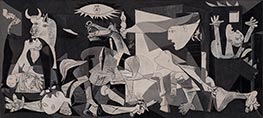
Giclée Canvas Print
$61.36
$61.36
SKU: 3553-PPR
Pablo Picasso
Original Size:349 x 776 cm
Museo Nacional Reina Sofia, Madrid, Spain
Pablo Picasso
Original Size:349 x 776 cm
Museo Nacional Reina Sofia, Madrid, Spain
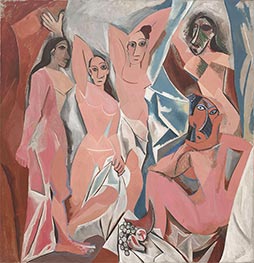
Giclée Canvas Print
$89.78
$89.78
SKU: 17710-PPR
Pablo Picasso
Original Size:244 x 233.7 cm
Museum of Modern Art, New York, USA
Pablo Picasso
Original Size:244 x 233.7 cm
Museum of Modern Art, New York, USA
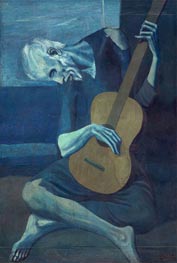
Giclée Canvas Print
$62.39
$62.39
SKU: 5358-PPR
Pablo Picasso
Original Size:123 x 82.6 cm
Art Institute of Chicago, Illinois, USA
Pablo Picasso
Original Size:123 x 82.6 cm
Art Institute of Chicago, Illinois, USA
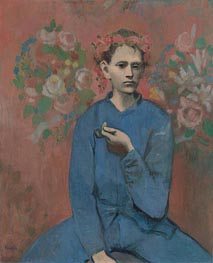
Giclée Canvas Print
$75.58
$75.58
SKU: 3528-PPR
Pablo Picasso
Original Size:100 x 81 cm
Private Collection
Pablo Picasso
Original Size:100 x 81 cm
Private Collection
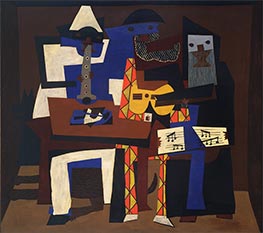
Giclée Canvas Print
$83.87
$83.87
SKU: 5062-PPR
Pablo Picasso
Original Size:200.7 x 223 cm
Museum of Modern Art, New York, USA
Pablo Picasso
Original Size:200.7 x 223 cm
Museum of Modern Art, New York, USA
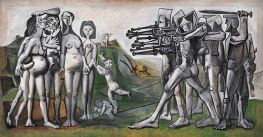
Giclée Canvas Print
$61.36
$61.36
SKU: 19312-PPR
Pablo Picasso
Original Size:110 x 210 cm
Musee National Picasso, Paris, France
Pablo Picasso
Original Size:110 x 210 cm
Musee National Picasso, Paris, France
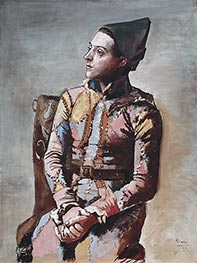
Giclée Canvas Print
$69.50
$69.50
SKU: 17133-PPR
Pablo Picasso
Original Size:130 x 97 cm
Kunstmuseum, Basel, Switzerland
Pablo Picasso
Original Size:130 x 97 cm
Kunstmuseum, Basel, Switzerland
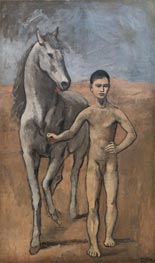
Giclée Canvas Print
$61.36
$61.36
SKU: 16621-PPR
Pablo Picasso
Original Size:220.6 x 131.2 cm
Museum of Modern Art, New York, USA
Pablo Picasso
Original Size:220.6 x 131.2 cm
Museum of Modern Art, New York, USA
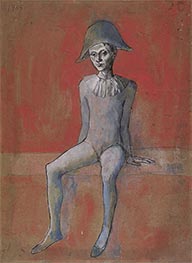
Giclée Canvas Print
$67.81
$67.81
SKU: 17131-PPR
Pablo Picasso
Original Size:57.5 x 41.2 cm
Gemaldegalerie, Berlin, Germany
Pablo Picasso
Original Size:57.5 x 41.2 cm
Gemaldegalerie, Berlin, Germany
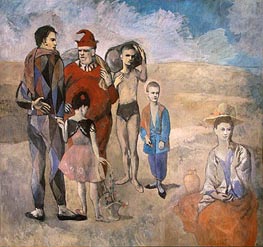
Giclée Canvas Print
$86.74
$86.74
SKU: 3532-PPR
Pablo Picasso
Original Size:unknown
National Gallery of Art, Washington, USA
Pablo Picasso
Original Size:unknown
National Gallery of Art, Washington, USA
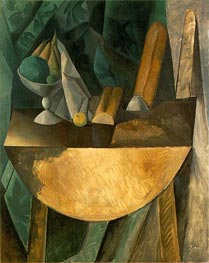
Giclée Canvas Print
$74.23
$74.23
SKU: 3552-PPR
Pablo Picasso
Original Size:163.7 x 132 cm
Kunstmuseum, Basel, Switzerland
Pablo Picasso
Original Size:163.7 x 132 cm
Kunstmuseum, Basel, Switzerland
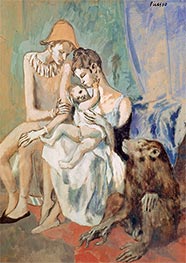
Giclée Canvas Print
$65.61
$65.61
SKU: 17128-PPR
Pablo Picasso
Original Size:104 x 75 cm
Museum of Art, Gothenburg, Sweden
Pablo Picasso
Original Size:104 x 75 cm
Museum of Art, Gothenburg, Sweden
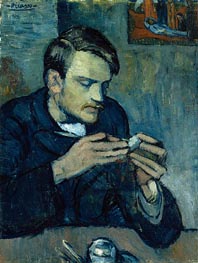
Giclée Canvas Print
$70.00
$70.00
SKU: 4225-PPR
Pablo Picasso
Original Size:unknown
Oskar Reinhart Museum, Winterthur, Switzerland
Pablo Picasso
Original Size:unknown
Oskar Reinhart Museum, Winterthur, Switzerland
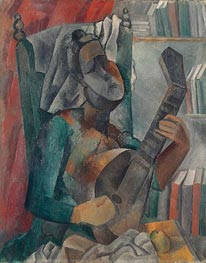
Giclée Canvas Print
$72.71
$72.71
SKU: 3544-PPR
Pablo Picasso
Original Size:92 x 73 cm
The State Hermitage Museum, St. Petersburg, Russia
Pablo Picasso
Original Size:92 x 73 cm
The State Hermitage Museum, St. Petersburg, Russia
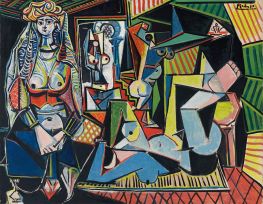
Giclée Canvas Print
$72.20
$72.20
SKU: 19670-PPR
Pablo Picasso
Original Size:114 x 146.4 cm
Private Collection
Pablo Picasso
Original Size:114 x 146.4 cm
Private Collection
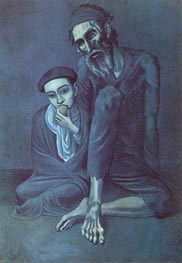
Giclée Canvas Print
$66.78
$66.78
SKU: 3538-PPR
Pablo Picasso
Original Size:125 x 92 cm
Pushkin Museum of Fine Arts, Moscow, Russia
Pablo Picasso
Original Size:125 x 92 cm
Pushkin Museum of Fine Arts, Moscow, Russia
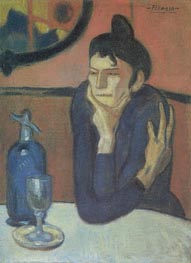
Giclée Canvas Print
$68.48
$68.48
SKU: 3534-PPR
Pablo Picasso
Original Size:73 x 54 cm
The State Hermitage Museum, St. Petersburg, Russia
Pablo Picasso
Original Size:73 x 54 cm
The State Hermitage Museum, St. Petersburg, Russia
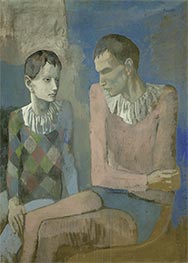
Giclée Canvas Print
$66.62
$66.62
SKU: 17129-PPR
Pablo Picasso
Original Size:105 x 76 cm
Private Collection
Pablo Picasso
Original Size:105 x 76 cm
Private Collection
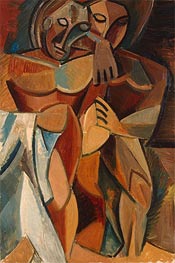
Giclée Canvas Print
$61.72
$61.72
SKU: 16489-PPR
Pablo Picasso
Original Size:151.3 x 101.8 cm
The State Hermitage Museum, St. Petersburg, Russia
Pablo Picasso
Original Size:151.3 x 101.8 cm
The State Hermitage Museum, St. Petersburg, Russia
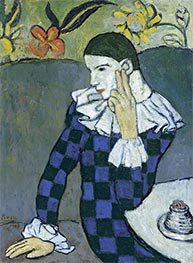
Giclée Canvas Print
$68.82
$68.82
SKU: 17132-PPR
Pablo Picasso
Original Size:83.2 x 61.3 cm
Metropolitan Museum of Art, New York, USA
Pablo Picasso
Original Size:83.2 x 61.3 cm
Metropolitan Museum of Art, New York, USA
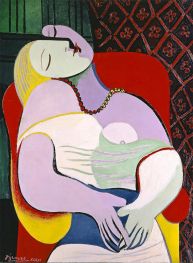
Giclée Canvas Print
$68.65
$68.65
SKU: 17076-PPR
Pablo Picasso
Original Size:130 x 97 cm
Private Collection
Pablo Picasso
Original Size:130 x 97 cm
Private Collection
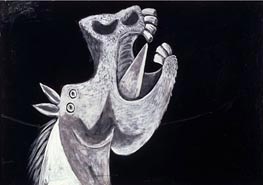
Giclée Canvas Print
$64.76
$64.76
SKU: 5359-PPR
Pablo Picasso
Original Size:65 x 92 cm
Museo Nacional Reina Sofia, Madrid, Spain
Pablo Picasso
Original Size:65 x 92 cm
Museo Nacional Reina Sofia, Madrid, Spain
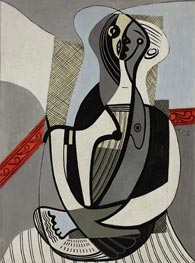
Giclée Canvas Print
$68.48
$68.48
SKU: 16660-PPR
Pablo Picasso
Original Size:130.8 x 97.8 cm
Art Gallery of Ontario, Toronto, Canada
Pablo Picasso
Original Size:130.8 x 97.8 cm
Art Gallery of Ontario, Toronto, Canada
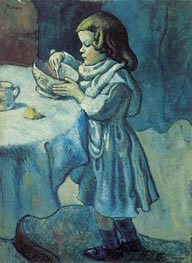
Giclée Canvas Print
$68.48
$68.48
SKU: 3530-PPR
Pablo Picasso
Original Size:92.8 x 68.3 cm
National Gallery of Art, Washington, USA
Pablo Picasso
Original Size:92.8 x 68.3 cm
National Gallery of Art, Washington, USA